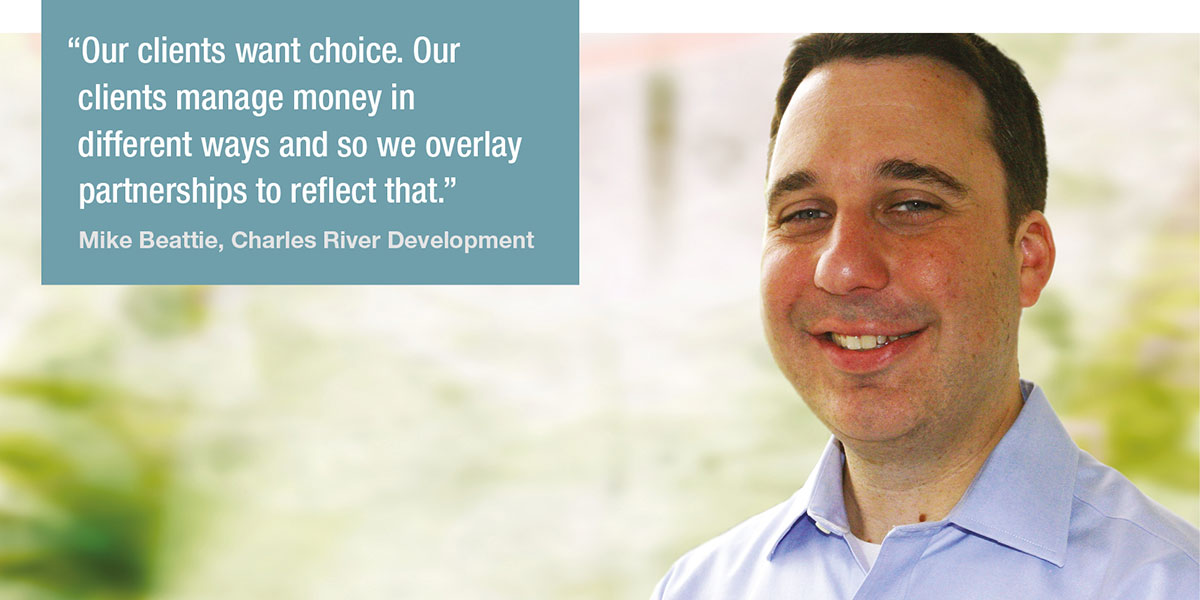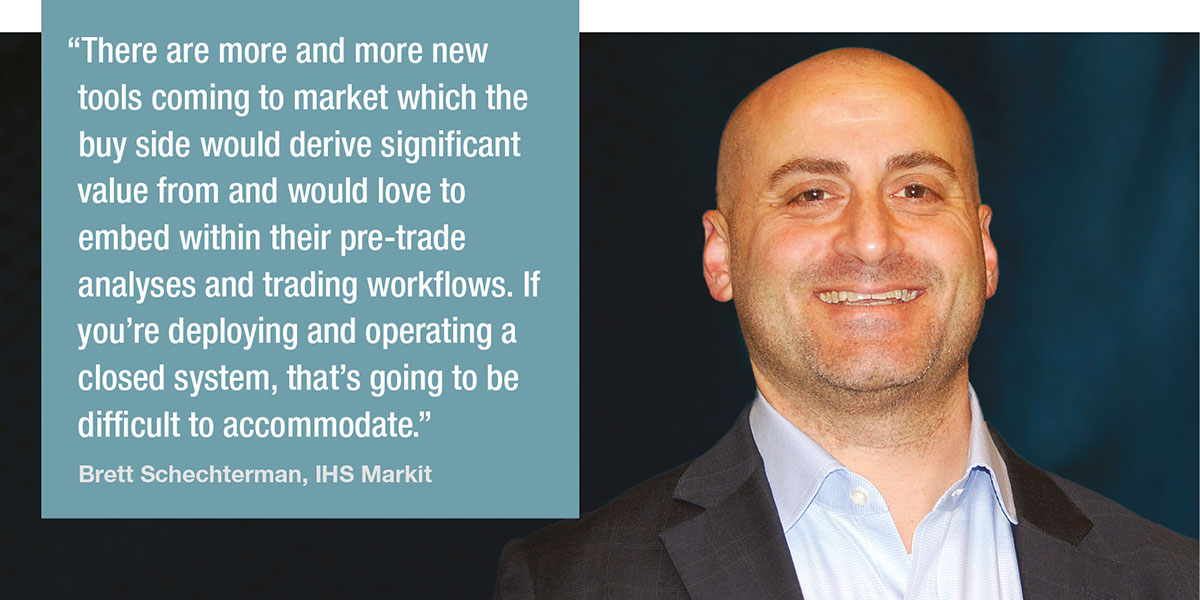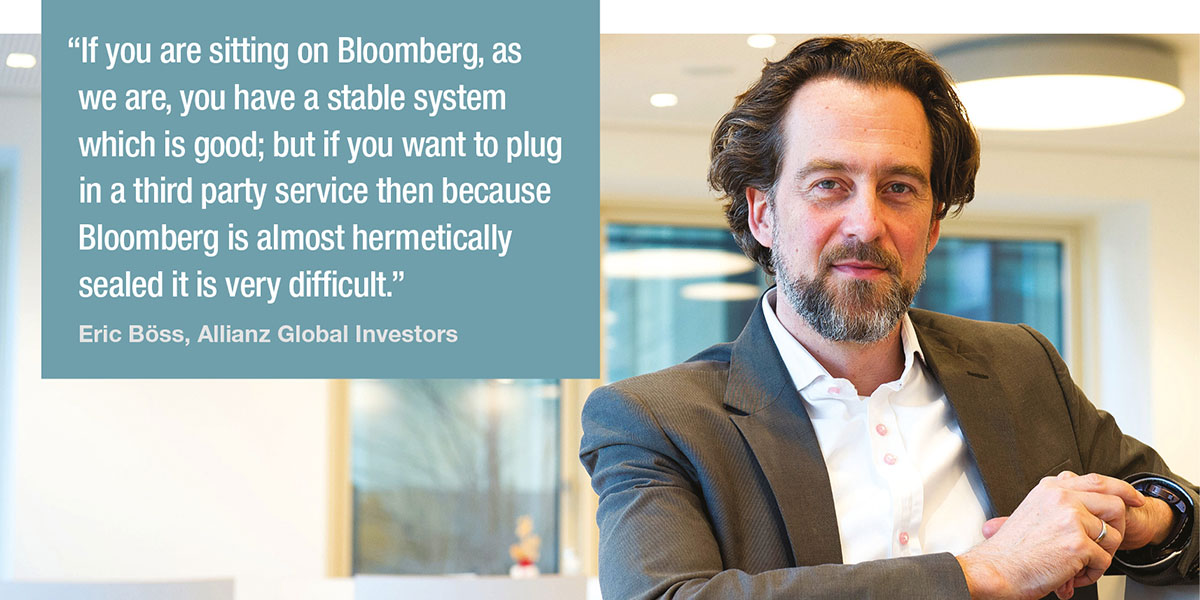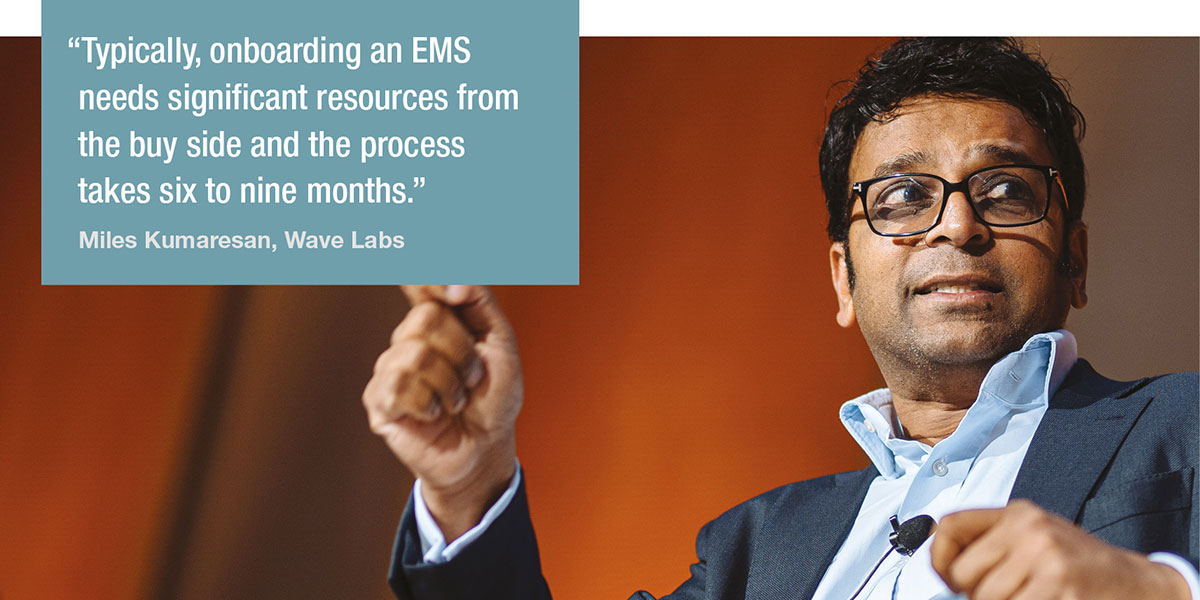 Dan Barnes investigates why big OMS providers are partnering with smaller players.
Dan Barnes investigates why big OMS providers are partnering with smaller players.
In 2018, following the acquisition of Charles River Development by State Street, it seemed that a head-to-head contest was developing with BlackRock’s Aladdin to provide front-to-back investment and trading platforms to buy-side firms. Bloomberg, whose ubiquity on the buy-side trading desk is unparalleled, already delivered a set of tools that could be used throughout the investment and trading workflow.
Yet in 2021, the market has seen a host of partnerships between these big players and smaller service providers. There has been a change in philosophy born from practical experience.
 “In the last three years our long-term strategy has changed,” says Mike Beattie, director of product strategy at Charles River Development. “It used to be, that we would build everything ourselves.” That is not the case now. “Today, we are truly positioned as a platform. When you think about defining that platform there are consumers of data, there are producers of that data, there are governance conditions over the platform and then there are the ways that people connect.”
“In the last three years our long-term strategy has changed,” says Mike Beattie, director of product strategy at Charles River Development. “It used to be, that we would build everything ourselves.” That is not the case now. “Today, we are truly positioned as a platform. When you think about defining that platform there are consumers of data, there are producers of that data, there are governance conditions over the platform and then there are the ways that people connect.”
 Brett Schechterman, managing director and global head of business for thinkFolio, at IHS Markit says, “I think we have seen a paradigm shift now where, because of the speed of change in fintech, portfolio and order management system (PMS/OMS) providers have to be open. There are more and more new tools coming to market which the buy side would derive significant value from and would love to embed within their pre-trade analyses and trading workflows. If you’re deploying and operating a closed system, that’s going to be difficult to accommodate.”
Brett Schechterman, managing director and global head of business for thinkFolio, at IHS Markit says, “I think we have seen a paradigm shift now where, because of the speed of change in fintech, portfolio and order management system (PMS/OMS) providers have to be open. There are more and more new tools coming to market which the buy side would derive significant value from and would love to embed within their pre-trade analyses and trading workflows. If you’re deploying and operating a closed system, that’s going to be difficult to accommodate.”
“The more collaboration the OMS has with specialised platforms that offer something unique, the better the overall execution/order management system (E/OMS) product becomes,” says Eric Böss, global head of trading at Allianz Global Investors.
 “The buy-side is extremely keen to get integrated processes with as few interfaces /application programming interfaces (APIs) to manage between them as possible.”
“The buy-side is extremely keen to get integrated processes with as few interfaces /application programming interfaces (APIs) to manage between them as possible.”
Over the past year, Aladdin has announced a partnership with EMS provider FlexTrade, Bloomberg has begun to offer trade idea provider Katana via its marketplace, while Charles River and thinkFolio have begun to work with multiple smaller firms such as BondCliQ, the bond price analytics provider, LumeAlfa, the pre-trade liquidity tool, and Wave Labs, the fixed income EMS.
Limitations of one-stop shop systems
There have historically been common issues with front-to-back providers raised by traders at investment management firms. Firstly, the need to upgrade the full technology stack in order to upgrade any single component makes functionality subservient to scheduling.
Secondly, workflows for bond trading can be very nuanced with differences based according to the fixed income instruments traded and the portfolios for which they are traded, and even based on portfolio manager preference. Reflecting that is a challenge for a single system.
“Our clients want choice,” says Beattie. “Our clients manage money in different ways and so we overlay partnerships to reflect that.”
Finally, innovating within a system that is largely based upon all elements changing at the same time can be difficult, particularly as new tools come to market.
These issues need to be balanced against the alternative; if a buy-side trading desk were to pull together multiple systems itself it would have to manage the cost and complexity of upgrading each system individually and ensuring they were correctly integrated.
“If you are sitting on Bloomberg, as we are, you have a stable system which is good; but if you want to plug in a third party service then because Bloomberg is almost hermetically sealed it is very difficult,” says Böss. “The price of stability seems to be inflexibility. There are platforms out there who take the opposite view by managing the interfaces for you. From a buy-side perspective I would like to overcome this inflexibility of having one provider without sacrificing stability. One of the ways to do that is to talk your provider into building that link for you so that they manage it.”
This balancing act appears to have been recognised by the big providers.
“Our long term strategy today has three parts,” says Beattie. “One is that to expand, we need to expand through partnership, which is most evident in the trading space. Two is that the way we release [new functions] has to be more efficient, it has to be better and has to be cheaper. Number three is that we continue to build. As an O/EMS provider we want to make sure our system is mission critical.”
Why partner with a bigger firm
There is a mutual benefit for the smaller firms who are partnering with OMS/IMS developers. The risk of onboarding a new tool to a bond trading desk can be high when the hours, cost and operational risk are considered. That can be a barrier to acceptance.
 Miles Kumaresan, CEO at Wave Labs, says “Typically, onboarding an EMS needs significant resources from the buy side and the process takes six to nine months. However, our ES-EMS eLiSA requires virtually no additional overheads and it takes just two to three weeks to roll out. It’s as simple as signing the contract, us setting up bespoke trader workflows and you are ready to trade.“
Miles Kumaresan, CEO at Wave Labs, says “Typically, onboarding an EMS needs significant resources from the buy side and the process takes six to nine months. However, our ES-EMS eLiSA requires virtually no additional overheads and it takes just two to three weeks to roll out. It’s as simple as signing the contract, us setting up bespoke trader workflows and you are ready to trade.“
The technical side of integration is not the only issue. Working with a new provider can create barrier to adoption as regulations designed to prevent operational risk set up administrative speed bumps.
Böss explains, “If a system is already integrated [with existing systems] it lowers the barrier to entry for use. When we had to onboard a system recently, it took half a year to get the contracts through all necessary reviews. If a function is added to a platform that is already in use that speeds up the use and reduces the costs and complexity of integrating. There have been examples historically where we did decide not to onboard a system due to the cost, and then reviewed that decision when they became available via partnership with a bank or another software provider.”
A mature approach to evolution
“Connectivity has been more of a hurdle than a path to progress, and that is true across all providers,” says Böss. “The bigger the system the more complex it can be to get it customised. It is notoriously difficult to make changes to these platforms, I have not seen one project with a major OMS provider that has not run over time or budget.”
Given the client need for newer tools in the bond trading space, it is a mature approach for larger firms to open up to partners thus removing this barrier of connectivity.
“The rate of change in financial technology (fintech) and the emerging provider ecosystem focused on solving specific problems or gaps is derived from deep and compelling expertise in these domains,” says Schechterman. “We know what we do really well and where we want to partner, so we have to offer a dynamic integration framework to deliver that comprehensive value proposition across the lifecycle. That’s where the market is going to continue to move going forward.”
Another technological development which will facilitate partnerships is the acceleration of new integration technologies including Cosaic/Finsemble, Glue 42 and OpenFin. These are allowing platforms to integrate more easily with one another, lowering their cost to interoperability.
“If you can utilise innovative [technology] containers and services where you leverage standardisation and integration protocols, it means a trader does not need to wait a year for their IT department to upgrade their OMS in order to benefit from a new integration,” Schechterman says. “If you build standard connectivity between these apps, you don’t have code bases that must remain constantly in sync. You build common APIs that everyone can read from, and that way, it’s not so inter-dependent. The exciting FDC3 initiative that is evolving through the OpenFin community has the thought leadership to say, let’s normalise and simplify how we integrate for the benefit of the market broadly.”
©Markets Media Europe 2021


















